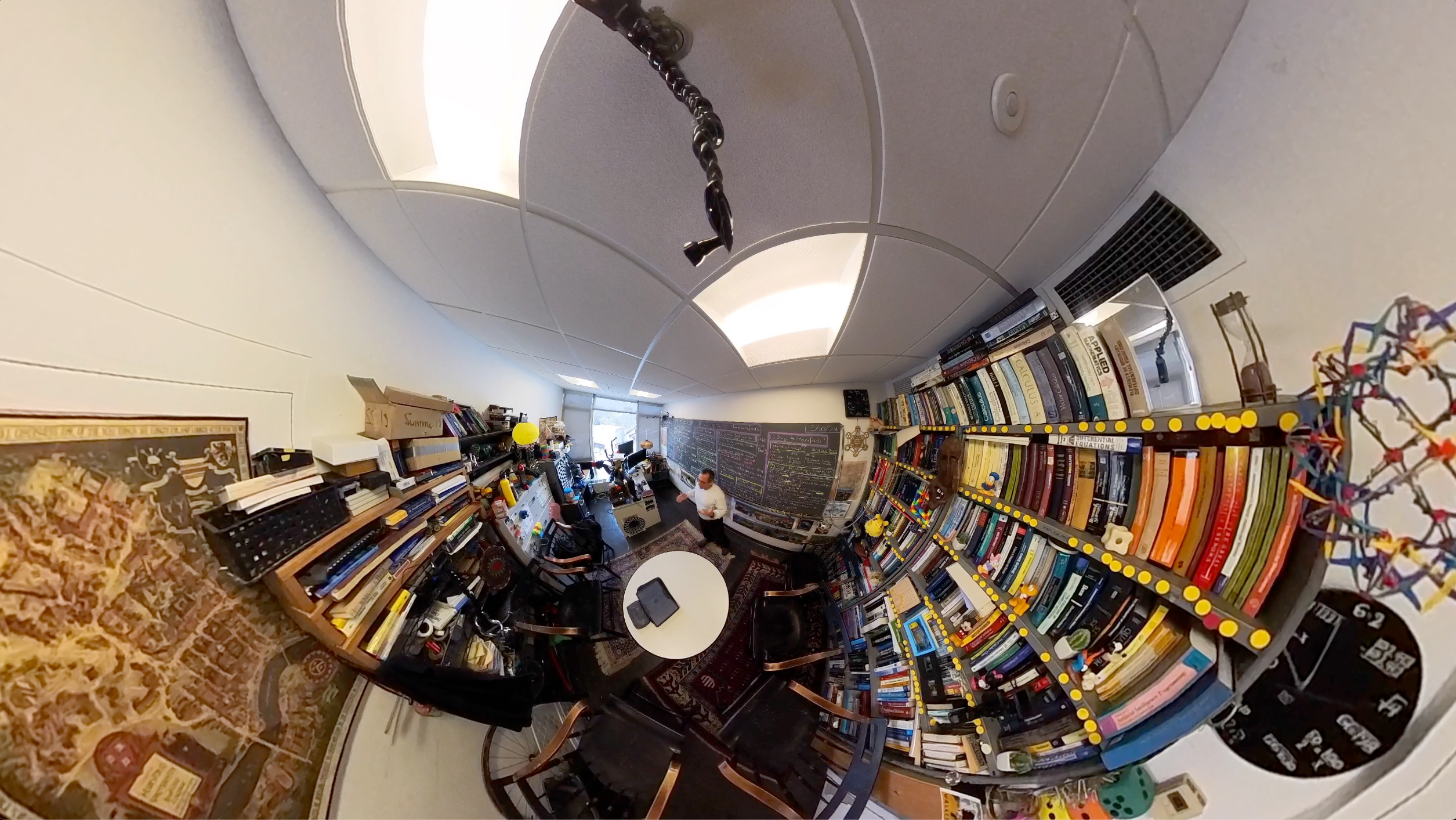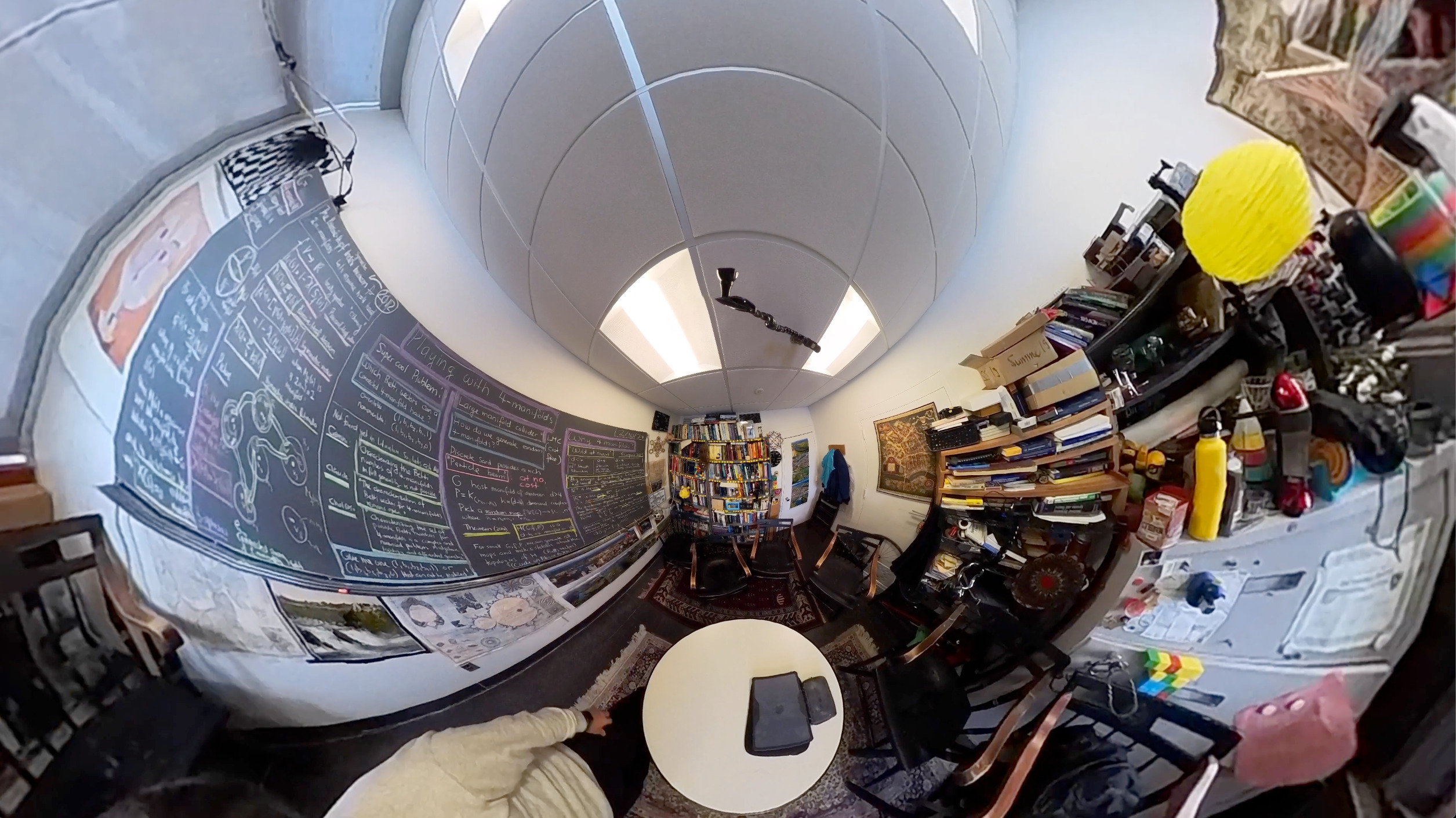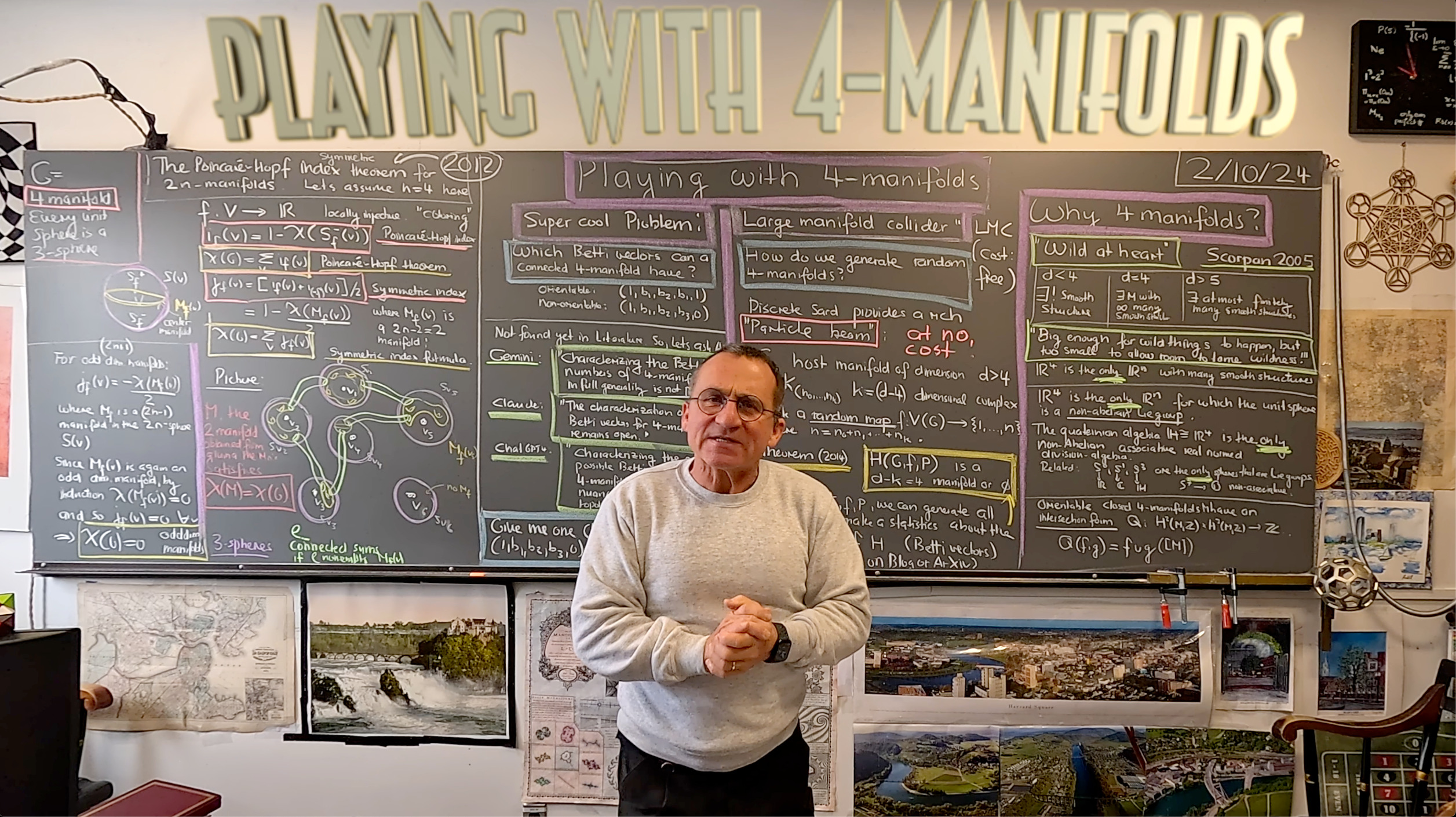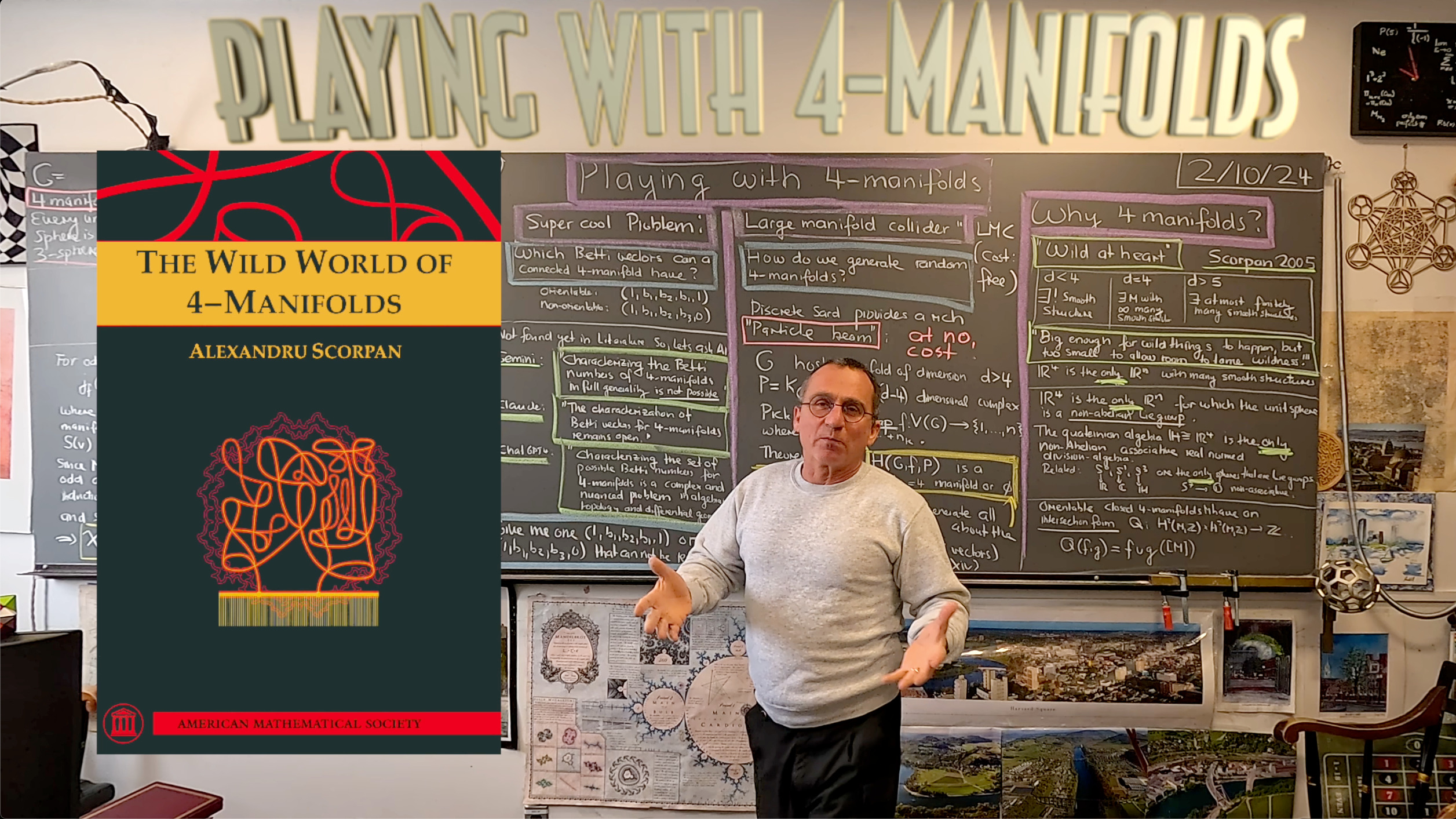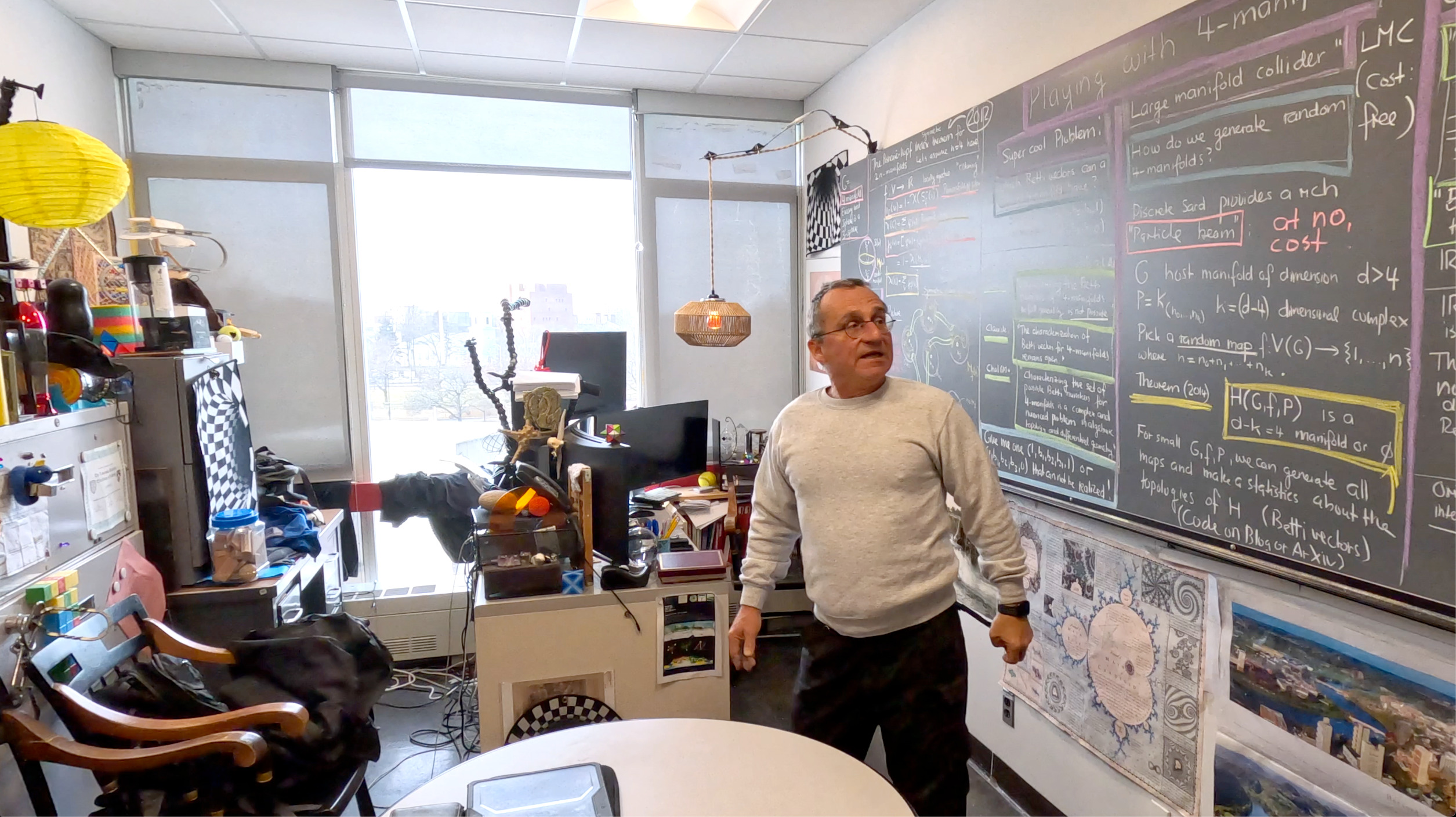The updated document “manifolds from partitions” with more code. I then mention the index theorem for simple graphs dealing with the symmetric index . Writing the unit sphere
as a union of
and
and $M_f(v)$, the center manifold. Now
. In the interpretation with the joined center manifold
, the relation is $\chi(M)=-\chi(G)$. The minus sign and a factor 2 was missing. The relation is $\chi(M)=-\chi(G)/2$. Also, if the center manifold should be empty. I used connections (connected sums) to get rid of the in 1-\chi(M_f(v))$. If we make the direct sum of two 2-manifolds, then the Euler characdteristic is the sum minus 2. To get rid of all the 1’s we have to build n connected sums. An example is if we have a function f without critical points. This means that all center manifolds
are 2-spheres so that
. In that case we can build n connected sums linking all these center manifolds to a 2-torus. The construction of this 2-dimensional surface from a function f on a 4-maniofld is a bit of a hack. It of course reminds of string surfaces traced out in phase space. For me it showed that the Euler characteristic is in some sense close to the Hilbert action in relativity. The Hilbert action is a functional however that is not a topological invariant. The point there is that we want to chose a metric which is a critical point of the functional. Euler characteristic does not change if we change the metric.
Apropos physics: there is a nice cheap trick in physics to solve the Einstein equations with matter: take any Riemannian (or pseudo Riemannian manifold) with a fixed metric. Now just postulate that the Einstein equations E(g)=T hold. These equations then define the energy-momentum tensor T and so mass. Voila, the Einstein equations are solved. Usually one goes the other way round: start with a mass distribution T and solve the complicated Einstein equations for g. Or look at the difficult initial value problem, where a mass-distribution on a hypersurface (space) is known so that the Einstein equations define an evolution equation. These are difficult PDE problems. Choquet-Bruhat (who recently turned 100 and was much in the news everywhere), there is some curvature present of course. Now just postulate that this comes from a mass distribution.
[Side remark: Maybe because I had posted a video about manifolds, a decade old video of Gromov on “What is a manifold” has turned up in my youtube feed. It is a talk I had seen many years ago already. The low video quality reminds how much progress we have made in the last 10 years. One can hardly see any video any more which does not have 4K resolution. There is not much content in that talk but you rarely look at content when watching famous people, you watch how they think and of course, it is also nice if you see the audience (and as many conferences, the talk also had a social component. It shows a bit the “who is who” in mathematics. There are some of the most famous mathematicians in the audience of that talk and it is a nice game to spot as many as you can. Most of the talk consists of rumblings and jokes and strange associations with other sciences like genetics ,but there are interesting aspects about manifolds: the first is the question how many different manifolds there are which can be realized with k simplices. This seems even asymptotically hard. Is it growing exponentially or super exponentially. An other rumbling is about why 4 is the most important number. Gromov: because 4=2+2. Gromov then points out the facts that one has formulas for cubic and quartics but not for quintics which is related to the solvability of polynomial equations and so to the question about solvability of permutation groups and so to the number of irreducible representations and Gromov points out that n=4 is the smallest number for which p(n) is larger than n. Maybe he just wanted to play with the audience. Anyway, a very entertaining and unusual talk. ]








